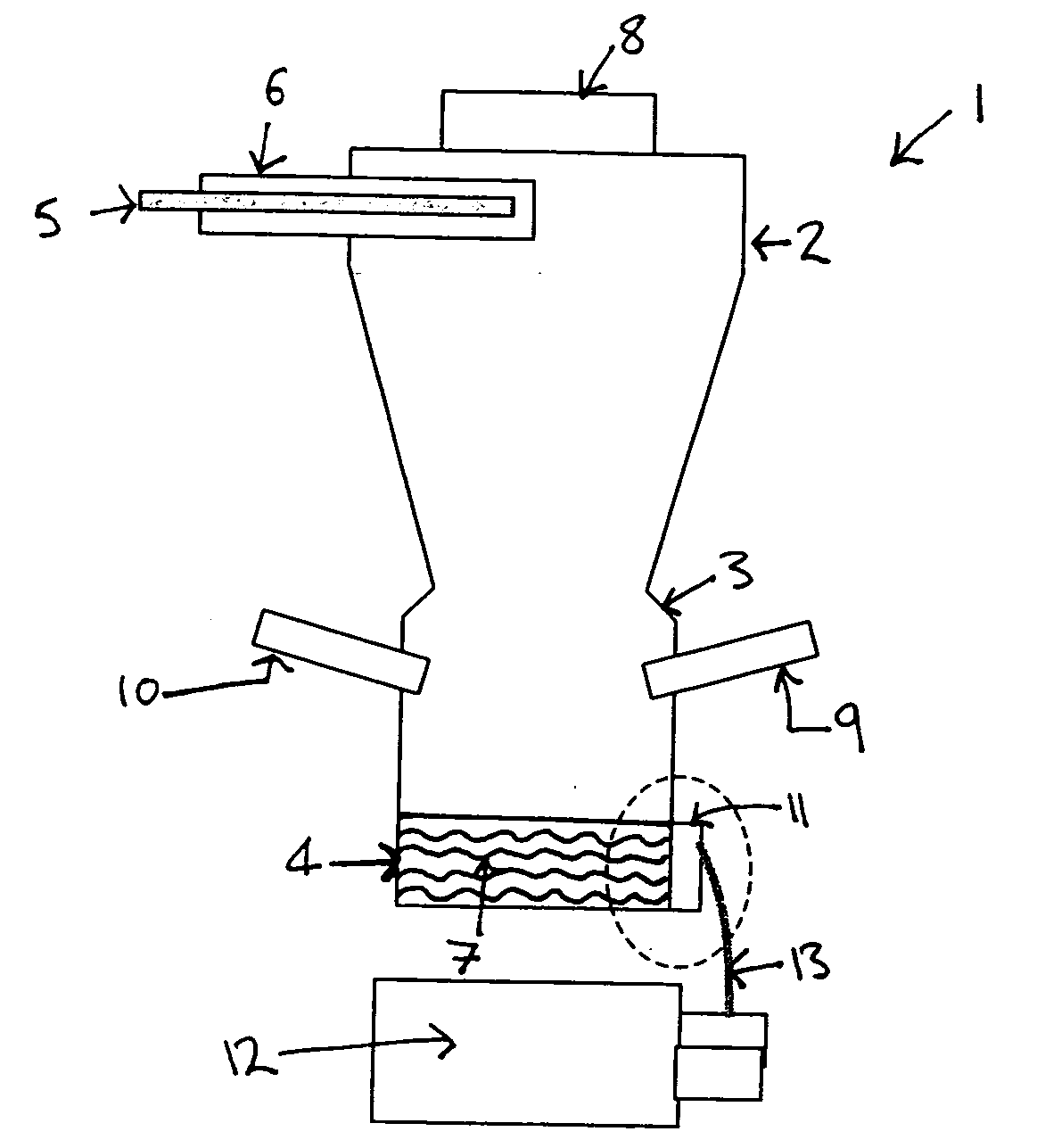Mold for glass substrate molding, method for producing glass substrate, method for producing glass substrate for information recording medium, and method for producing information recording medium
a technology of glass substrate and molding method, which is applied in the direction of glass making apparatus, dough shaping, manufacturing tools, etc., can solve the problems of high sulphur content of effluent, high cost and inconvenience of forming briquettes, and iron waste, so as to achieve high energy efficiency, reduce surface area loss, and heat the melt homogeneously
- Summary
- Abstract
- Description
- Claims
- Application Information
AI Technical Summary
Benefits of technology
Problems solved by technology
Method used
Image
Examples
example
[0104]The inventors have demonstrated that providing fuel as secondary fuel into the bottom section of the circulating combustion chamber is a very efficient way to increase the melt temperature. In the tests performed, the total amount of fuel energy (primary and secondary) into the cyclone was increased by 2%. The extra fuel was added as secondary fuel provided at the bottom of the chamber. The amount of primary fuel was kept constant. This led to an increase in the melt temperature of 40-50° C.
[0105]To achieve the same temperature rise of the melt in a cupola furnace, much more than 2% extra energy would be needed.
[0106]The high efficiency of the present invention is due to the fact that adding fuel energy in the bottom section can rapidly and efficiently heat the thin layer of melt running down the sides of the chamber and in the base of the chamber.
PUM
| Property | Measurement | Unit |
|---|---|---|
| Fraction | aaaaa | aaaaa |
| Fraction | aaaaa | aaaaa |
| Fraction | aaaaa | aaaaa |
Abstract
Description
Claims
Application Information
 Login to View More
Login to View More - R&D
- Intellectual Property
- Life Sciences
- Materials
- Tech Scout
- Unparalleled Data Quality
- Higher Quality Content
- 60% Fewer Hallucinations
Browse by: Latest US Patents, China's latest patents, Technical Efficacy Thesaurus, Application Domain, Technology Topic, Popular Technical Reports.
© 2025 PatSnap. All rights reserved.Legal|Privacy policy|Modern Slavery Act Transparency Statement|Sitemap|About US| Contact US: help@patsnap.com


